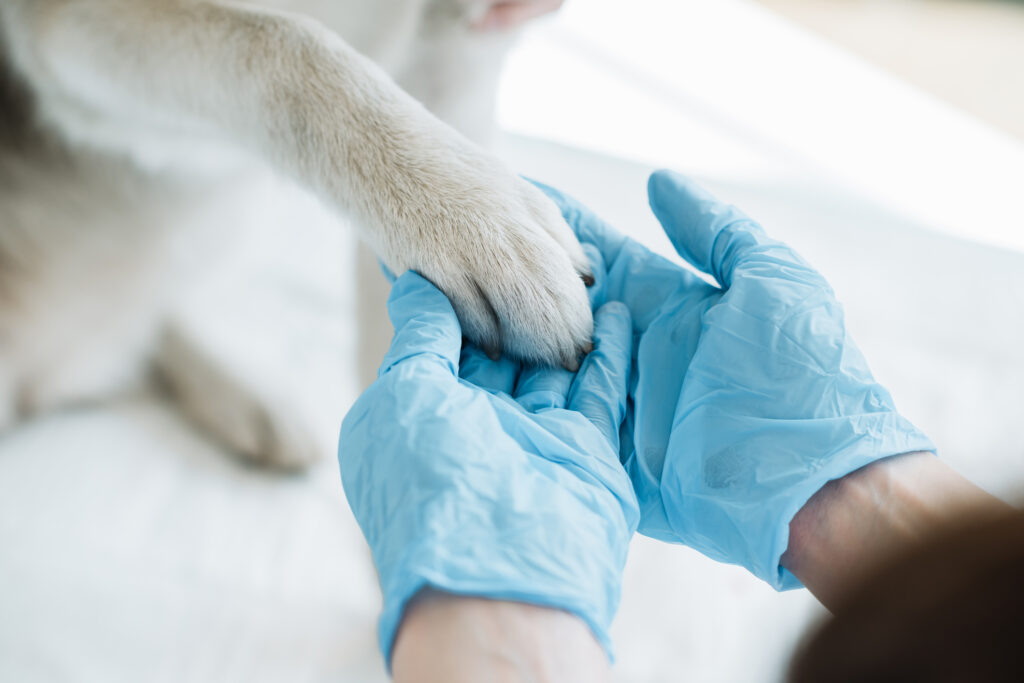When it comes to our dogs, there are very few things we wouldn’t do as owners to keep them safe and healthy. Caring for our pets, and ensuring their quality of life is as high as possible, would come top of the priority list for many of us.
However, there are times when life is hectic and things don’t always go to plan. Whether it’s changing jobs, moving house, or an unexpected life change, the important aspects of taking care of our dogs can occasionally fall through the cracks. With this in mind, we wanted to provide you with a checklist to make sure your dog’s health and wellness needs are being met.
1. Build a strong relationship with your veterinarian
Many of the tips on this list will flow naturally from conversations you have with your veterinarian. It sounds self-explanatory, but when it comes to your dog’s health, your vet is going to play a pivotal role. Your veterinarian is someone you should trust and feel comfortable speaking with, so when choosing a new one, make sure that you do your research and seek recommendations from other dog owners.
More than someone you only see once a year for your dog’s annual check-up, building a strong relationship with your veterinarian gives you a resource to fall back on for any concerns with your pup – no matter how minor or trivial. Great communication can ensure that any potential health issues are addressed at an early stage, increasing the likelihood of a better outcome for your dog and reducing the potential financial burden arising from costly surgery further down the line.
2. Maintain a healthy weight
A ‘healthy weight’ will look different for every dog, based on the following factors:
- Breed
- Size
- Age
- Exercise requirements
- Any specific dietary restrictions
- Any prior health history that could affect their ability to gain, maintain or lose weight
Overweight and underweight dogs can result in different problems later in life. If your dog is carrying too much weight, this can put an undue strain on their organs and bone structure. Conversely, an underweight dog may not be getting adequate nutrition to remain healthy, and its bones may be weaker.

3. Offer opportunities for exercise
Taking your dog for a short walk each day should be treated as the minimum requirement for dog owners. Consider other ways you can provide physical exercise for your dog, such as taking them for an off-leash hike, or engaging in a new activity like agility or trailing.
Different breeds require different levels of exercise, so take this into account when assessing your dog’s requirements. This is dictated by their size, but also by their genetics – for example, farm dogs and mountain dogs, both of which historically spent their days covering vast areas of land, will need far more exercise than a more sedentary Toy breed who may be happier lazing on the couch.
4. Provide good nutrition and supplements
Your dog’s nutrition forms the building blocks of their health and wellbeing. This is literally the fuel that will provide them with energy and help their body to develop. It is therefore vital to feed your dog a balanced, well-rounded diet that is in line with their size and level of exercise.
Some dog owners are proponents of a raw diet, but others choose budget-friendly alternatives such as kibble. Your veterinarian or a nutrition specialist will be able to guide you here.
5. Stay up-to-date on vaccinations
This is where building a strong relationship with your veterinarian will bear fruit. In addition, it is beneficial to find one who aligns with your perspective on vaccinations and educate you with clear, concise explanations that are rooted in science.
Remember, each state and jurisdiction has slightly different requirements on which vaccinations are required.

6. Stay on top of your dog’s grooming
Grooming is not just for aesthetics; it can actually have an impact on your dog’s wellbeing, too. Consider incorporating these grooming essentials into your schedule:
- Nail trims – While trimming nails can often be an arduous task, if they get too long, they can break, reduce your dog’s mobility, and even cause pain for your pup.
- Brush your dog – Brushing can reduce mats and help to distribute natural oils in the skin. It can also help you spot any bumps, sores or other noticeable irritations on the surface of your dog’s skin.
- Give them a bath – A bath helps to keep your dog clean and sanitary.
Of course, if you are pressed for time – or your dog is particularly fearful of being groomed – it may be worth enlisting the help of a professional groomer.
7. Provide mental enrichment
Mental health is just as important as physical health. We have spoken before about the benefits of mental stimulation – this prevents your dog from engaging in destructive behavior.
There are lots of ways to provide mental enrichment to your dog. From taking part in a new dog sport like scent work (which encourages them to use their excellent olfactory system), to playing the ‘hide the treat’ game, encouraging your dog to problem-solve is a great way to keep their brains active.
8. Make sure your home is safe for dogs
Puppy proofing your home is vital when you bring home a new four-legged member of the family, but even older dogs can get themselves into trouble when wandering around your house. Beware of trailing wires from electronics that could easily be turned into chew toys, or leaving food that dogs shouldn’t eat out on the counter.
Outside the home, ensure that your yard is safe for your dog to explore. Make sure that anything sprayed outside and around your home is safe for your dog.
9. Obedience training
Gaining control of your dog is a surefire way to keep them out of harm’s way. Consider a dog who likes to bolt out of the door or chase after smaller animals – teaching them a reliable recall can help to mitigate and prevent these issues from occurring.
This can be done through an obedience training program. Working with a professional dog trainer can help you to resolve any behavioral concerns and ensure your dog stays out of trouble.
In summary
Looking after our dogs is about much more than simply feeding them and letting them outside once in a while – there are several aspects we can review to enhance our dog’s quality of life.
Whether it is providing them with ample exercise, monitoring their food and supplement intake, or offering mental stimulation, we have demonstrated that there are several ways to boost your dog’s health and wellbeing.
Related posts

Follow These Car Travel Safety Tips For Your Dog
Traveling with your dog in your car can be fun – but keeping them safe should be your top priority.

Why Dogs Are The Best Pets
Okay, so we all know that dogs are the best pets – but now we’ve collated the science and data to prove it.

New Puppy Checklist: Here’s What You Need
Bringing a new puppy home? Here’s the list of everything you’ll need to give your new pup the best start in life!


You must be logged in to post a comment.